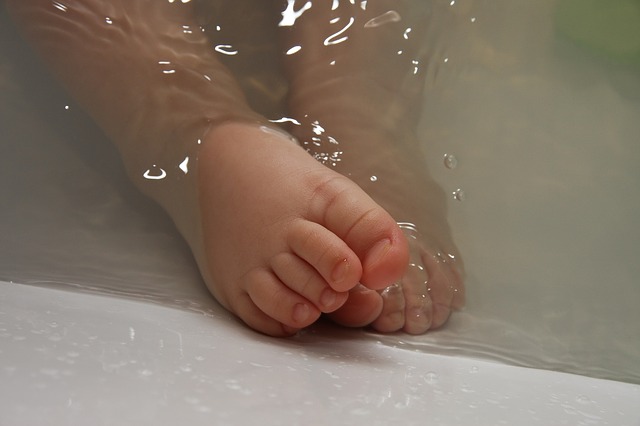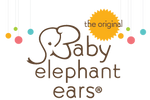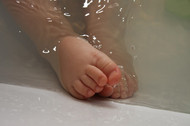5 Tips for Keeping Baby Well Groomed
1st Jun 2015
 Keping a baby well-groomed is simpler than most people
think. You do everything that you would for yourself… just a little more
gently. Here are some tips to help.
Keping a baby well-groomed is simpler than most people
think. You do everything that you would for yourself… just a little more
gently. Here are some tips to help.
1. Bathing
Until your baby’s umbilical cord falls off, there’s no need for any baths. Instead, use a warm wash rag without soap and gently rub down your baby. Be gentle in the face and diaper area, especially for circumcised boys.
Once the umbilical stump has fallen off, you can submerge your baby in water. Regular bathing is good, but there’s no need to bathe every day. Babies have sensitive skin that can be damaged by too much exposure to soap and warm water. During the first few months, bathing two to three times per week is sufficient.
2. Moisturizing
In most cases, there is no need to lotion your baby’s skin. Baby skin is delicate and susceptible to irritation from many products. Plus, it heals quickly so dry spots and rashes will fade fast. If your doctor recommends using lotion, use a baby-safe brand, not one designed for adults.
3. Nails
If this is your first child, you will be amazed how quickly your child’s nails grow. You’ll trim them down and then have to do it again in a few days. It’s remarkable.
Babies can scratch themselves, especially during the first month, so it’s important to mind the nails. Use a file to wear them down slightly. Don’t use clippers until about four months old as this is when babies’ fingers are big enough for clippers to be useful. It’s easiest to do the nails after a bath when the skin and nails are softest.
If your baby is a squirmier and doesn’t like his/her nails being done, try to do just one per day. When you finish a set, start from the beginning again.
4. Nose
Young children are booger factories. If mucus could be sold, some families would be rich. :)
To help your child breathe easier, you’ll want to regularly clean out the nose. Even during the summer months, their noses need a good scoop here and there. Babies naturally breathe through their nose, so if you see your child breathing through his/her mouth, the nose might be clogged up.
Some families like to use aspirators, but truthfully oogiebear is the best solution: it’s painless, quick and fun for baby!
5. Hair
Little ones are prone to cradle cap, an oily discharge on the scalp that dries into scale-like flakes. It’s 100% harmless and it fades away with age. You can use a bit of baby oil and a fine-tooth comb to remove it, or just leave it be. It will disappear on its own. Resist the urge to peel it off or scratch it.
You can use a gently baby shampoo for hair, but most babies don’t have enough to need it. General soap is usually fine unless your child has unusually thick hair.
Don’t worry if your child has bald spots or thin spots. These are caused by a lot of time spent on his/her back. The hair will grow back.
 Guest Blog by Dr. Nina Farzin, Inventor of oogiebear
Guest Blog by Dr. Nina Farzin, Inventor of oogiebear
Nina is a wife, mother and career professional who never intended to start her own business. When her children were newborns, she ached to ease the discomfort from dry, stubborn, crusty mucus (boogers)! As a doctor, she knew there were no safe solutions on the market to help her kids, so she invented oogiebear, a revolutionary booger removal tool that helps babies breathe easier.
Nina graduated Howard University where she earned her doctorate in Pharmacy (R.Ph, Pharm.D). She is a Registered Pharmacist in Washington DC, Maryland and New York. Nina and her family are fitness enthusiasts who enjoy outdoor activities and healthy eating.
For more information, please visit myoogie.com.
Interested in writing a guest blog for Baby Elephant Ears? Send your topic idea to pr@babyelephantears.com.
All data and information provided on this site is for informational purposes only. Baby Elephant Ears makes no representations as to accuracy, completeness, current-ness, suitability, or validity of any information on this site and will not be liable for any errors, omissions, or delays in this information, or any losses, injuries, or damages arising from its display or use. All information is provided on an as-is basis.

